Cheese board ideas: how to make the perfect cheese plate
Whether you are serving a cheese course after dinner or enjoying a cheesy night in for two, our cheese board ideas walk you through everything from cheese selection to wine pairings

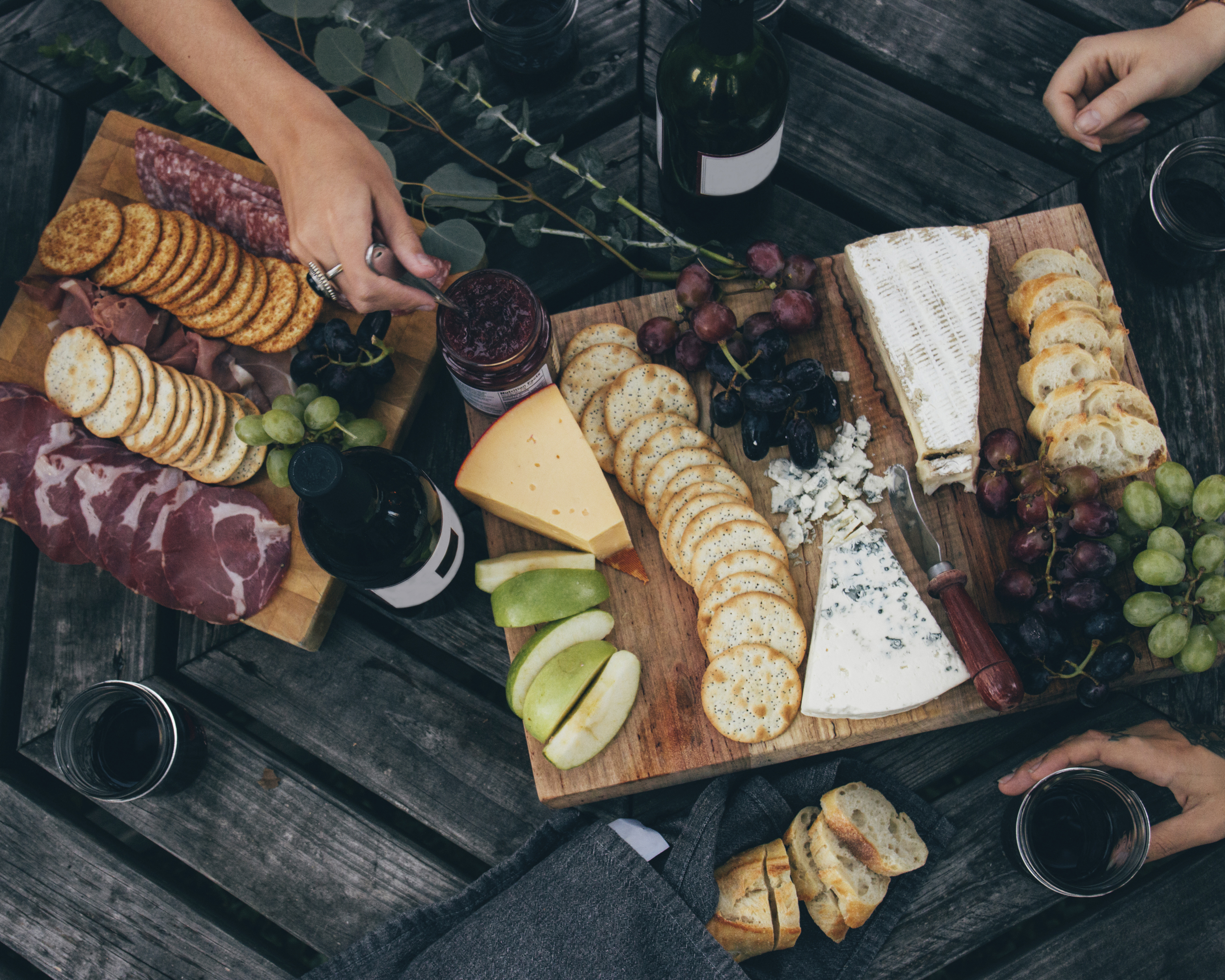
If you love cheese as much as team Real Homes you will know that a good cheese plate is not just for at the end of a meal. It should take pride of place on the menu and we happily serve it as the main course whenever we can.
So we have put together these cheese board ideas so everyone can share in our love of the stuff. And it might be well timed too – after all Christmas is the time we eat the most cheese. Whether you are hosting or just enjoying a quiet night in, it is an easy and fun dinner option.
There is a bit of a science to building the perfect cheese board though. So we have put together what we hope is the complete guide to creating your cheese platter, including tips from the experts.
From knowing how much cheese you need, to choosing the right accompaniments, read on and you will be putting these cheese board ideas to good use in no time. Be inspired, then for some tipple to pair with it, take a look at the best alcohol delivery services.
Cheese boards and plates: what to serve your cheese on
Before you even think of buying your cheese, you need to make sure you have a way to serve it. Decide how big a board you need. This will depend on whether you plan on putting all of the cheese and accompaniments on one platter, or want the cheese on its own, with everything else in separate serving dishes. We like the look of a large slate or marble board, crammed with cheese, charcuterie, grapes, bread – the lot – but some find it less practical for getting in and cutting a wedge off.
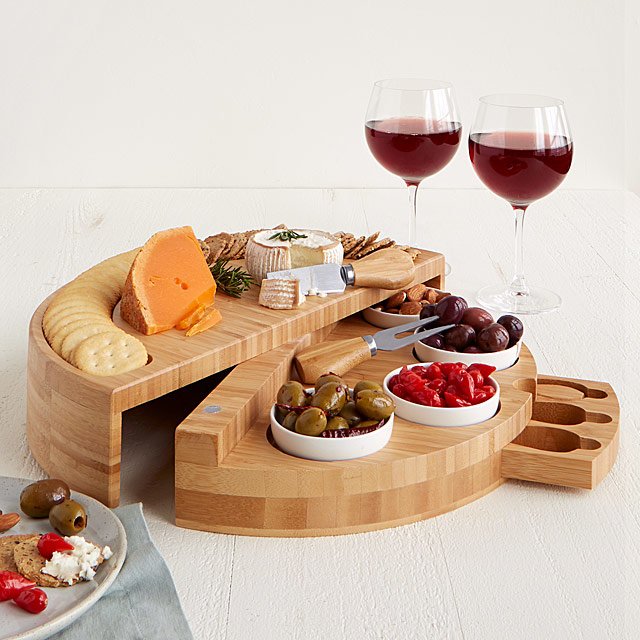
We also love the cheese boards that come with a set of knives for cutting and serving. Another great serving idea is a chalk board or slate that you can write the name of each cheese next to. Finally a big chopping board does a great job and offers rustic cool when laden with cheese, crackers and some fresh fruit.
Get your cheese out a couple of hours before serving so it is not fridge-cold as that impairs flavor. Some cheese boards have a dome to protect the cheese while it is out, but a clean tea towel can protect it while allowing it to breathe (yes, cheese needs to breathe).
Get small space home decor ideas, celeb inspiration, DIY tips and more, straight to your inbox!
What are the best cheeses for a cheese board?
If the cheese board is for a quiet night in for two, then of course you can put whatever you want on, but if you are entertaining it is best to have a variety so that there is something for everyone. When you get a cheese board in a restaurant, you will find that they tend to include one of each of the following:
- Hard aged cheese: such as Cheddar, Manchego, Gouda and Gruyère
- Bloomy rinded cheese: such as Brie or Camembert
- Blue cheese: Stilton, Roquefort or Danish Blue
A fourth or fifth type of cheese may be included, such as a soft washed rind cheese (Reblachon, Epoisses or Fontina) and then a cheese flavored with herbs, fruit, chillies or even a smoked cheese.
Some cheeses fit into two or more of these categories and can be chosen to give a bit of breadth to your cheeseboard without having to buy too many different types. For example, Cambozola is like a blue-veined Brie so ticks a few boxes, or a nice flavoured cheddar could make room on your cheese board for a nutty Manchego to play the part of the hard cheese.
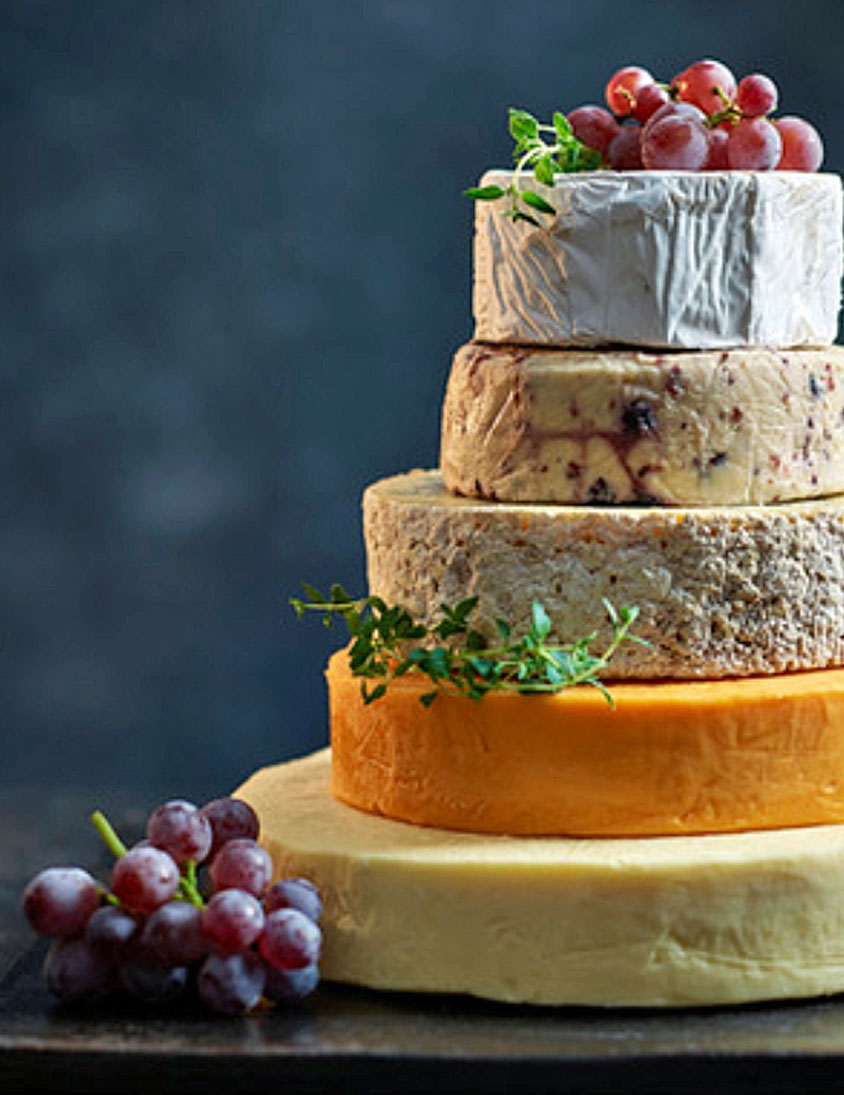
1. How much cheese?
Where to buy cheese online
UK:
Pong – a wide range of cheeses sorted by type and country
Fortnum & Mason – browse their cheese counter
Paxton & Whitfield – 200 years of cheesemongering
The Fine Cheese Co. – cheese, wine, deli and charcuterie
Amazon – cheese from artisans and big brands
US:
Harry & David – shop the charcuterie and cheese section
Hickory Farms – browse gourmet cheese and gift baskets
iGourmet – a huge range of cheese from around the world
Amazon – shop cheese from a number of sellers
If you are serving a cheese course at the end of a meal or as an appetizer, you need about two or three ounces (about 60–90 grams) per person. If you are throwing a cheese and wine party, or enjoying the cheese board as a supper, you will need to double that and allow at least four ounces (from 120g) per person, if not slightly more.
When buying pre-packaged cheese, get about three blocks for a gathering of four to six people – you can freeze the leftovers or use in recipes in the following days. If possible though, visit a deli counter where you can buy the cheese off the block and choose how much you want. This will avoid wastage and mean you could buy a few more cheeses of different types.
2. Pick a cheese board theme
Now you know what styles of cheese need to go on your cheese board for a well-balanced plate and how much to buy, how can you narrow it down from the thousands on offer? Marissa Mullen from That Cheese Plate and inventor of the Cheese by Numbers method recommends using a theme to guide your cheese selection, but don't let it become a case of style over substance. She says, 'Although the theme is important to aesthetics of a cheese plate, you want to make sure the pairings on the plate work together. The taste is the best part!'
See the ideas below to give your cheese board a steer.
3. Theme by region
One smart option is to choose a region or country and explore cheeses from that one area. Places known for their cheese such as Italy, France and even England create such a wide range of cheeses so it won't be hard to find one of each. Try these combinations for inspiration:
- French cheese board: Comte, Brie, Roquefort, Epoisses
- Italian cheese board: Pecorino, Tallegio, Gorgonzola
- British cheese board: Cheddar, Stinking Bishop, Cashel Blue, Wensleydale & Cranberry
You could also choose a theme of locally-sourced cheeses if you live in an area where this is possible. Or for something different pick cheeses from different countries for a little tour of the world in dairy form.
4. Theme by season
A post shared by Marissa • That Cheese Plate (@thatcheeseplate)
A photo posted by on
Cheese plate expert Marissa Mullen often takes a seasonal stance when theming her cheese boards:
'If I'm making a winter themed cheese board I'd want to include some decadent cheeses, like a soft-ripened cow's milk cheese or a pungent blue, paired with a sweet accoutrement like fig jam or spiced pecans. In the summertime I'll incorporate fresh cheeses, like mozzarella or feta paired with fresh veggies and charcuterie. Having a theme is a great way to determine which garnishes and color to incorporate. I made a "Charcuterwreath" for the holidays (above) and used a ton of fresh rosemary, incorporating green and red tones arranged in a circle to mimic a wreath!'
5. Vegan cheeses

The Tyne Chease vegan selection box on TheVeganKind supermarket, for £19.95, is perfect for a dairy-free cheese board
Vegans don't have to miss out on the cheese board either. You can now get a whole host of vegan cheeses made from cashew, coconut and soya. This can be a great option for people who can't tolerate dairy, too.
The vegan cheese you get in the supermarket is often just cheddar style, so look online or in specialist stores for a wider range. You can find not only lots flavored with chilli, herbs and fruit, but also everything from creamy spreadable cheeses, to softer washed-rind styles. Brands to look out for are Bute Island, Left Coast Culture and Tyne Chease in the UK (they are all sold on TheVeganKind supermarket cheese section), and Daiya and Follow Your Heart in the US.
6. Eating in order
When it comes to devouring that cheese board, you do you. However, to best preserve the taste of each cheese, it makes sense to eat from mild to strong in terms of flavor. Eating a strong blue cheese before a delicate Brie will impair the taste, so start with the soft rinded cheeses and work your way up to the saltiest, tangiest options. Not sure which cheese is strongest? Smell is a good giveaway, so let your nose guide your through your platter.
Bread and biscuits for cheese
While we love a lump of cheese by itself, crackers and breads are a must. Again, you can choose breads that match the region of the cheese you are serving – pain de campagne for French cheese, ciabatta with Italian cheeses and rye or pumpernickel with Northern European cheese – but if in doubt a warm baguette or fresh sourdough is best.
Biscuits for cheese come in almost as many varieties as the cheeses themselves. Buy a selection in lots of textures to make every mouthful different. Simple flavors won't overpower the cheese you are serving so go for salted and wheat crackers, though a herby or seeded one can be a nice change.
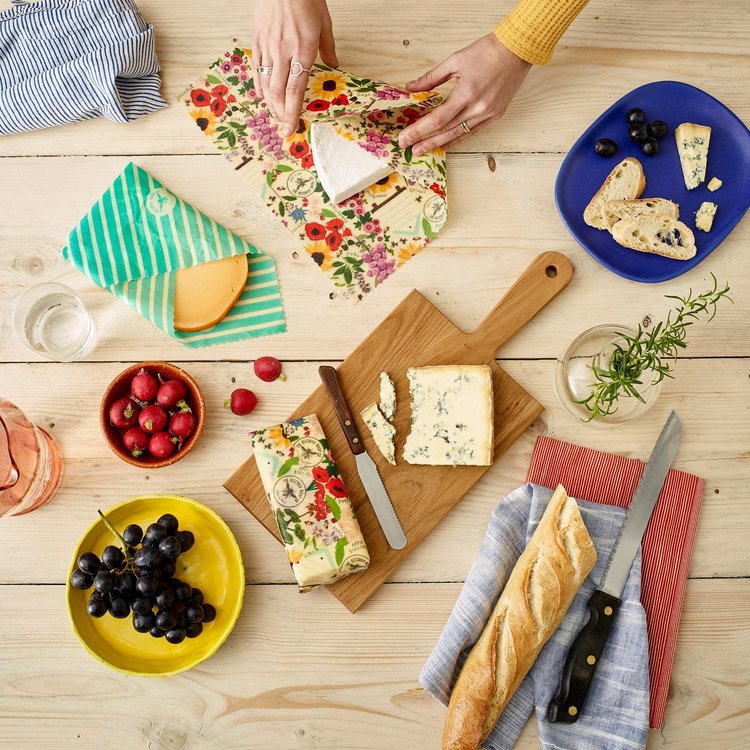
Leftover cheese? Though this may be unlikely always wrap it up afterwards. We love sustainable wax wrap like these from the Beeswax Wrap Co
Savory accompaniments to your cheeseboard
A few extras on your cheese board add interest for presentation, but also act as palate cleaners between cheeses. Once again, a regional cheese board can be themed in its accompaniments. See some options below.
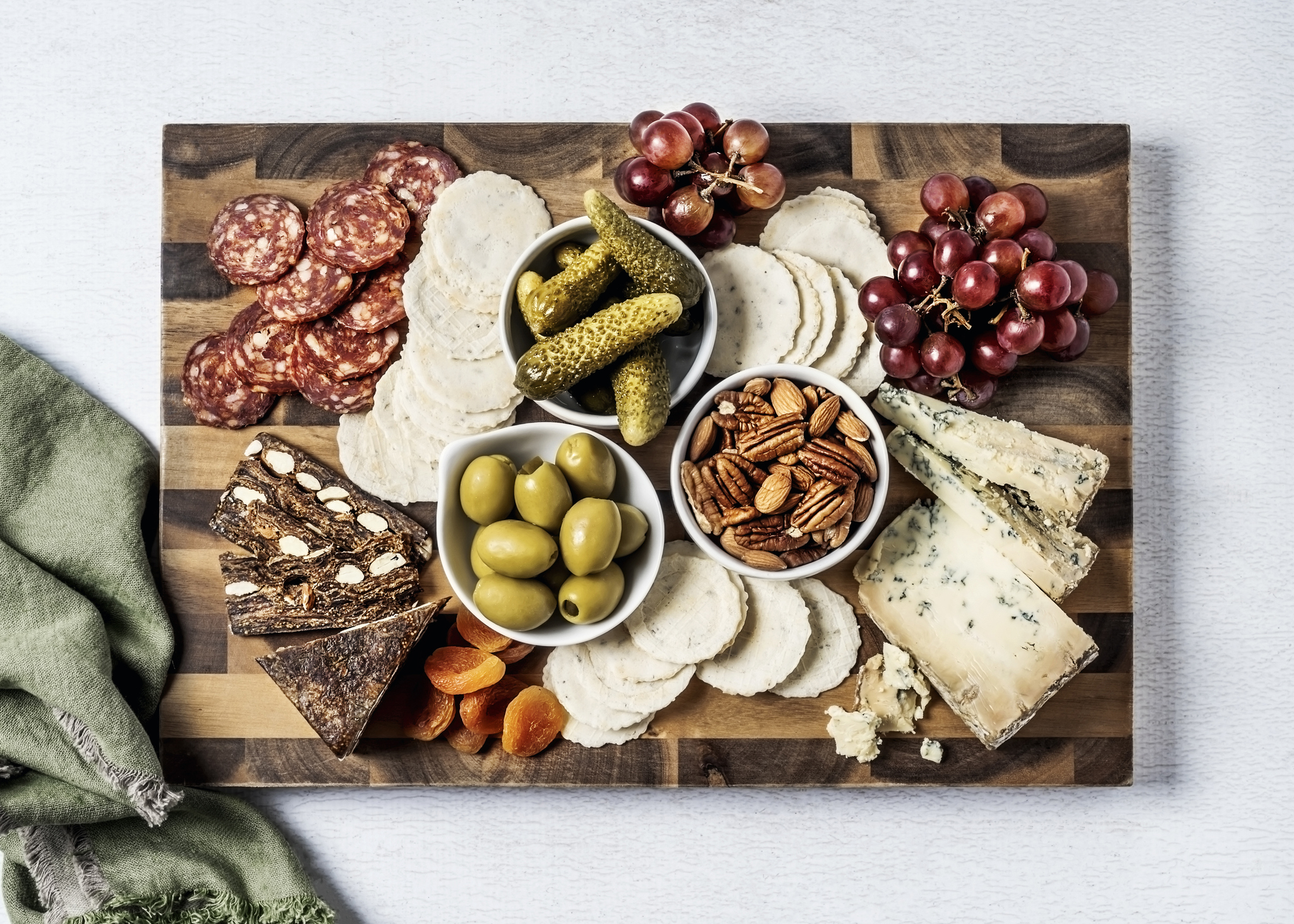
1. Veg and crudités
These are not just there to get in your five a day. Vegetables can pair nicely with different cheeses and help mellow the flavor of a particularly strong cheese. They also bring a contrast in texture.
- Celery: cut into short batons and arrange in a small mug or jar to serve
- Carrots: carrot sticks also add some crunch and can share the celery jar for serving
- Peppers: sweet pepperdews stuffed with feta or cream cheese are not just a side but another cheese for the board
- Tomatoes: technically a fruit but their acidity cuts through hard cheeses well
- Olives: a salty little bowl of olives will complement rather than compete with the cheese
- Cornichons: these bring a lovely sour tang to your cheese plate and go well with the other accompaniments
2. Charcuterie
Antipasti and cured meats have a well earned place on the cheese board. And, if you only want to buy three types of cheese, they add bulk and some extra flavor profiles to enjoy. Some places will even do packs of Italian prosciutto, bresaola and parma ham paired with a few cheeses for ease.
When it comes to arranging them on your cheese board, they might look lovely piled alongside the Cheddar, but be mindful of vegetarian guests who might not want to eat cheese that has touched the meat.
3. Nuts, chips and dips
Don't go overboard, but some simple potato chips, a cool dip and salted nuts are also at home on a cheese board. Again, this will help make a smaller selection of cheeses go further and complement the salty flavors of them.
Sweet accompaniments to your cheeseboard
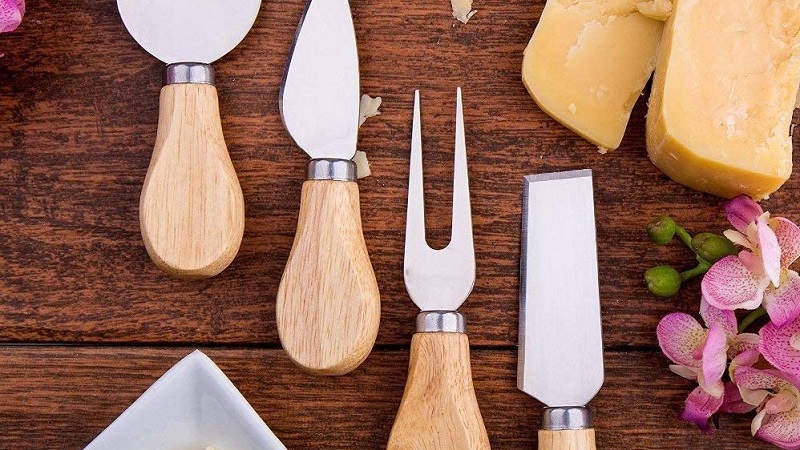
Not everyone likes mixing sweet and savory but a few fruity elements can go really well with cheese. Tart chutneys and fruit balance the fat and salt of a strong cheese for a more rounded flavor.
This can be a great chance to get your homemade (or gifted) chutneys on the table, but if you don't have any to hand consider the following:
- Grapes: the ultimate cheese accompaniment. We like eating them with the cheese but apparently you are meant to eat them between cheeses to cleanse the palate for the next one.
- Apple: beautifully acidic. Cut right before serving so they don't go brown and ruin the look of your cheeseboard.
- Berries: choose tart red currants or even dried cranberries (or cranberry sauce).
- Figs: these look beautiful in halves or quarters on the board and work really well with blue cheese.
Wine pairings
Last but not least, what is a good cheese board without some liquid refreshment? Real cheese snobs would say not to overwhelm a lovely cheese with a strong red as the tannin can affect the flavor, but we think there are plenty of wine pairings that make cheese even better.
And yes you guessed it – this is another place to regionalize your cheese board. French cheese and French wine is a trope for good reason. Just follow the tips below to pick a wine that won't overpower your cheeses.
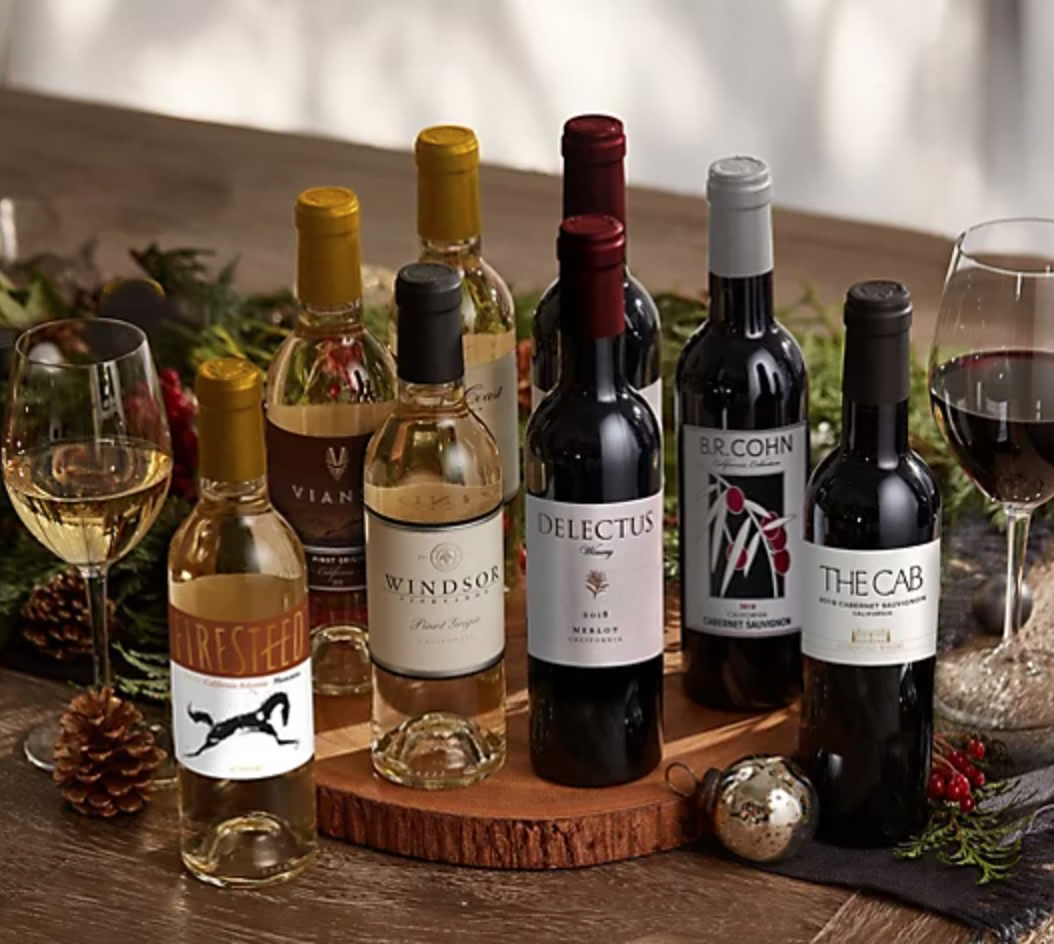
1. Fresh cheese, fresh wine
If you are pairing cheese and wine, it is quite simple to do. Just choose fresher, lighter wines to go with milder, creamier cheeses. Soft bloomy cheeses pair very nicely with light whites and even sparkling wines. Think crisp Chenin Blanc or Sauvignon Blanc, or even a semi-sweet Reisling.
2. Red wine
Red wines which are lower in tannins are best for cheese. Rioja, Pinot Noir and Beaujolais are all much lighter than some of the heavy reds. Some people are also sensitive to tannins so serving low-tannin wine is a good idea for any gathering.
3. Sweet wines and Port
In the UK a big bottle of Port and a jar of Stilton is a common Christmas present. The flavour of the sweet heady port and the almost bitter Stilton just works so well. But if you are new to the world of dessert wines then tasting them with cheese is a good place to start. The sweetest wine is a match made in heaven for the saltiest cheese – especially blue cheeses.
4. Cider and perry
Not a wine drinker? Cider and perry (pear cider) also go with cheese really well – in the English West Country cider and Cheddar is pretty much a way of life. Again, choose a less sweet and fresher cider to go with milder cheeses, and the sweeter stuff for your richer cheese.
Cheese by Numbers: the easiest way to build your cheese board
Keep your cheese board super simple with Marissa Mullen's Cheese by Numbers method. It is six easy steps to make cheese boards as stunning as hers.
A post shared by Marissa • That Cheese Plate (@thatcheeseplate)
A photo posted by on
1. Cheese: Depending on the amount of guests, I'd go with three to five different varieties of cheese. Try different milk types, textures and flavors.
2. Meat: Add some charcuterie to the plate, such as salami or prosciutto. If your guests don't eat pork, you can add beef or poultry based items like bresaola or turkey.
3. Produce: Pair your cheeses with fresh fruits, veggies, dried fruits and items in a brine like olives or cornichons. Consider what flavors will pair well together. For example, I love pairing goat cheese with fresh berries and gruyere with dried apricots.
4. Crunch: Add in texture and vehicles for your cheese with crackers, bread and mixed nuts.
5. Dip: Fill in your bowls with a dip to pair with your cheeses. I like using fig jam, honey, or a grainy mustard for something more savory.
6. Garnish: Add fresh herbs to the plate for a pop of color to tie everything together. Edible flowers are a fun addition as well if you have access to them!

Lindsey is Editor of Realhomes.com and Editor in Chief for Home Ecommerce at Future. She is here to give you aspirational, yet attainable ideas for your home and works with her team to help you get the best buys, too. She has written about homes and interiors for the best part of a decade for brands including Homes & Gardens, Ideal Home and Gardeningetc and isn't afraid to take the inspiration she finds at work into her own space – a Victorian terrace which she has been (slowly) remodelling for the last eight years. She is happiest sipping a cup of tea with a cat on her lap (if only she had a cat).